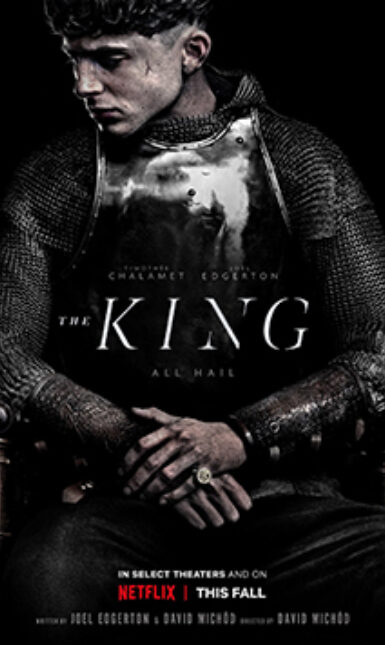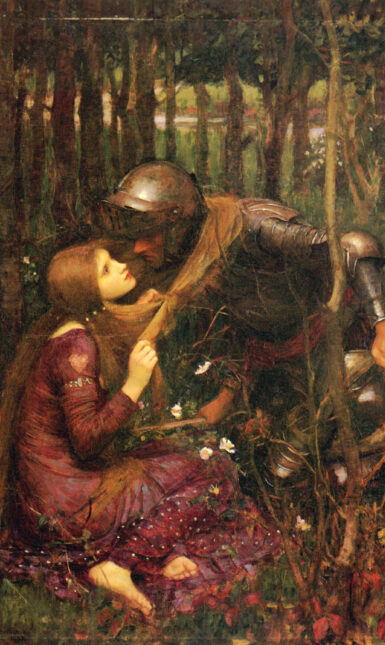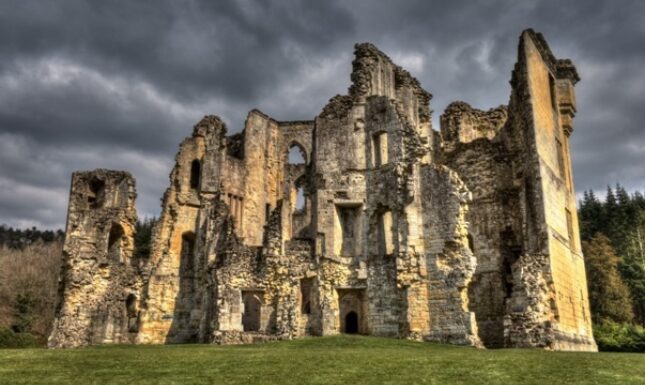Double-voiced medievalism? The Middle Ages in the Modern World
Why do we keep going back to the Middle Ages? Why do we create both idealised and grotesque representations of the medieval past in popular culture?
“The ghosts of the Middle Ages are unquiet”, wrote Professor David Matthews in his book Medievalism: A Critical History (2015). That is because the medieval past keeps ‘haunting’ us in the form of literary texts, theatre, films and television series (as well as in other cultural expressions), coming back to life on a daily basis.
Just a quick browse through the Netflix catalogue will confirm that: the film The King (2019) recreates the youth years of Prince Hal until his coronation as Henry V in the early-fifteenth century; the series Knightfall (2017-2019) depicts the persecution of the Knights Templar during the reign of King Philip IV of France (1268-1314); and the fantasy series The Witcher (2019-) adapts the pseudo-medieval world created on the page by the Polish writer Andrzej Sapkowski. Our contemporary world is filled with different images of medieval pasts circulating in popular culture. However, the way the Middle Ages are reconstructed on the page, stage, screen or any other medium, is in no way random. It is inevitably associated with the several contexts surrounding the artistic object: historical, political, cultural, and economic contexts, to name but a few. In this scenario, the question that keeps popping into my head is: why? Why do we keep going back to the Middle Ages?
Medievalism
This question is central to the field of Medievalism. The British scholar Tom Shippey defines medievalism as “the study of responses to the Middle Ages at all periods since a sense of the medieval began to develop”. Therefore, it does not consist of a study of the actual Middle Ages per se, but rather of how this period has been perceived and recreated by different cultures in different times. If we take a look at the Netflix catalogue once again, we may ask: why was there an interest in reviving the strife between a French king and the Knights Templar in 2017? A medievalist would analyse the associations between the medieval past as depicted in the show and the events in the contemporary world that could have prompted such a decision, drawing conclusions that would explain why this specific part of history would be meaningful for a 21st-century spectator.

Romantic x Grotesque
Alice Chandler wrote in her seminal book A Dream of Order: The Medieval Ideal in Nineteenth-Century English Literature (1970) that one of the reasons for us to be constantly looking at the medieval past with a nostalgic longing is the desire to feel at home in a quiet and orderly world. The Middle Ages could offer this “partly historical but basically mythical” place, as Chandler puts it, which would be in stark contrast with the accelerated and mechanical modern world. In this sense, the Middle Ages were idealised as a period of faith, order, joy, and creativity. Stories of the bravery of lawful knights and a primitive connection with nature and the wilderness abound. Matthews explains that German and British romanticism, for example, portrayed a specific interest in medieval culture and its association with the primitive, as the poetry of John Keats (1975-1821) demonstrates. Here is an excerpt from Keats’ poem “Robin Hood”:
No! those days are gone away
And their hours are old and gray,
And their minutes buried all
Under the down-trodden pall
Of the leaves of many years
(…)
Gone, the merry morris din;
Gone, the song of Gamelyn;
Gone, the tough-belted outlaw
Idling in the "grenèshawe";
All are gone away and past!
And if Robin should be cast
Sudden from his turfed grave,
And if Marian should have
Once again her forest days,
(…)
She would weep that her wild bees
Sang not to her—strange! that honey
Can't be got without hard money! (ll. 1-5; 33-41; 46-48)
In this poem, it is clear the nostalgic longing of the poet for the old times in which Robin Hood and the Maid Marian roamed the earth, when the world was not yet as corrupted by the power of money. It is clearly a very idealised depiction of the medieval past, constructed on feelings towards modernity instead of relying on historical facts.
The painter John William Waterhouse (1849-1917) interpreted another poem by Keats, “La Belle Dame Sans Merci”, on canvas in 1893. The painting has the same title as the ballad and illustrates an idealisation of courtly love. It depicts a knight in full armour enchanted by the spell of a beautiful lady.

Matthews calls this approach to the Middle Ages as romantic or romanticised, emphasising the rather mythical appeal of the past, reconstructed to fulfil the needs of the present.
On the other hand, there is another vision of the Middle Ages, which Matthews calls grotesque or gothic. It entails “the assumption that anything medieval will involve threat, violence and warped sexuality” (15). This refers to a perception of the Middle Ages as the Dark Ages, a period of cruelty and ignorance. Scenes of medieval torture and violence abound in the pseudo-medieval world of Westeros, created by the author George R. R. Martin, for instance.
Another example is in the Gothic novel A Sicilian Romance (1790), by Ann Radcliffe. As the narrator encounters a castle in ruins on the northern shore of Sicily, she learns from the local friar that the castle has a sordid history: “These walls were once the seat of luxury and vice. They exhibited a singular instance of the retribution of Heaven, and were from that period forsaken, and abandoned to decay”. The external decay of the building mirrored the moral decay of the castle’s owner in the late Middle Ages. It reflected the idea of the medieval past as tainted with sin and vice.

What is double-voiced medievalism?
This spectrum grotesque-romantic resides at the core of my approach to analysing representations of the medieval past in modern culture. I have given examples of how the Middle Ages were depicted in literature and art as either an idealised and partly-mythical past or as a dark period of history. However, the vast majority of cultural representations of the Middle Ages will not be exclusive romantic or grotesque. In fact, they will combine elements of both. This cultural phenomenon is what I call double-voiced medievalism. I call it double-voiced, because it emphasises the two different perspectives of the medieval past in confluence – both romantic and grotesque.
As an example, it is interesting to analyse how the narrator in A Sicilian Romance first reacts to the ruins of the castle before encountering the friar. She wrote: “As I walked over the loose fragments of stone, which lay scattered through the immense area of the fabrick, and surveyed the sublimity and grandeur of the ruins, I recurred, by a natural association of ideas, to the times when these walls stood proudly in their original splendour, when the halls were the scenes of hospitality and festive magnificence, and when they resounded with the voices of those whom death had long since swept from the earth”. The words used by the narrator are in deep contrast with the ones used by the friar. While the latter referred to “luxury and vice”, the first imagined the place’s early “splendour and grandeur”, as well as its “hospitality and festive magnificence”. This is an example of a double-voiced medievalism within Radcliffe’s text.
Being aware of a double-voiced medievalism within a text is important in order to understand that traces of both a romantic and a grotesque Middle Ages are perceptible and intertwine. It is the medievalist’s task to investigate why.
I return now to the question I posed in the beginning of this post: Why do we keep coming back to the Middle Ages? Is it a nostalgic desire to reconnect and perhaps create a simpler past? Or a celebration of modernity over a barbaric Dark Age? Or both? Next time you watch a medieval reconstruction from your Netflix catalogue, think about that!
As I close this post, I will leave the ghosts of the Middle Ages at peace, at least for now.
Further reading:
Medievalism: A Critical History, David Matthews
A Dream of Order: The Medieval Ideal in Nineteenth-Century English Literature, Alice Chandler
“Charles Macready’s King John: Victorian Theatre and Double-Voiced Medievalism”, Fernanda Korovsky Moura. Available at: https://doi.org/10.26512/dramaturgias.v1i1.9043
Studies in Medievalism XXIX. Politics and medievalism (studies), edited by Karl Fugelso
The Cambridge Companion to Medievalism, edited by Louise D’Arcens
© Fernanda Korovsky Moura and Leiden Medievalists Blog, 2021. Unauthorised use and/or duplication of this material without express and written permission from this site’s author and/or owner is strictly prohibited. Excerpts and links may be used, provided that full and clear credit is given to Fernanda Korovsky Moura and Leiden Medievalists Blog with appropriate and specific direction to the original content.


